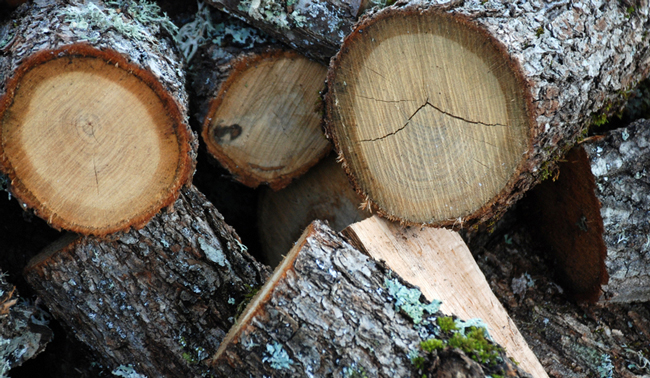Insects in Firewood Are Usually Harmless
By Chris Williams on February 18, 2014.

Question
We just found a couple of really big, fat grubs in our downstairs area. Actually our cat found them. They were on the tiles around the fireplace. Do you think they could have come down from the chimney? They don’t seem to have legs, so they couldn’t have walked very far. Any idea what they are?
Answer
I have a suspicion as to what they are. Grubs are the larval form of certain beetles like May or June beetles, Japanese beetles, and chafer beetles (read more here). I’m going to guess that you have a stack of firewood downstairs near your fireplace and that the grubs came from that wood. They may have been living and feeding in that wood all along, or they may just have been spending the winter under the protection of the bark. In any case, the warmer, drier indoor air forced them out into the open. Or, maybe your cat dragged them out into the open! Regardless, they don’t want to be in your home any more than you want them there.
When we find unusual pests indoors in our area in winter, firewood is always a suspect source. Most insects spending the winter in firewood are not a problem once indoors. They usually emerge in small numbers and die fairly quickly in the dry air. Other firewood insects that actually feed on the wood like carpenter ants, termites, and certain beetles rarely cause a problem indoors either. The chances of them leaving the firewood and finding suitable wood in your house with a high enough moisture level to allow survival are slim.
Keeping Bugs Out of Your Firewood
You can get rid of firewood insects by simply vacuuming them up or tossing them back outside. Whatever you do, don’t spray the firewood with pesticides. It likely won’t penetrate to reach the insects anyway. While firewood insects are not harmful, there are steps you can take to reduce the numbers of bugs in your firewood:
- Split wood as soon as possible so it has time to dry
- Stack firewood up off of the ground
- Store firewood loosely with air spaces between so wood dries
- Rotate the woodpile to air it out, and so that you use older wood first
- Debark the logs before bringing them inside
- Don’t stockpile wood indoors; bring in only small quantities at a time